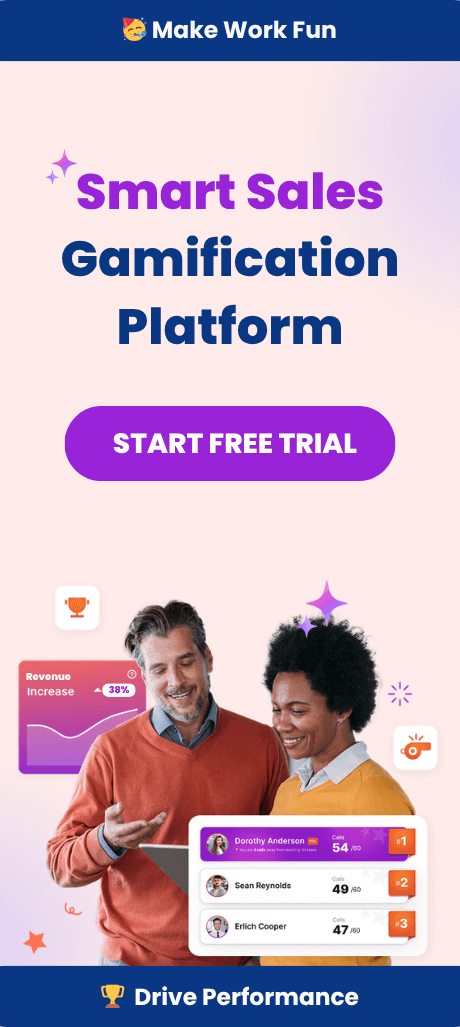Your business largely relies on its employees. Every employee plays a role in the business, from the receptionist to the management staff, that ensures team performance is on par with your expectations. While you expect your employees to perform their tasks and offer excellent performance, these expectations are not always met.
This is why it is essential to monitor employee performance. Effective ways to monitor employees can pay off in the long run, help you identify opportunities for training, and ensure you can address underperforming staff. We’re looking at how you can monitor team performance more effectively in this post.
Setting Goals For Employees, Teams, And Departments

One thing that can ruin business performance is failure to provide employees and teams with proper goals. When you do not give people goals to strive toward, they are unsure of what they need to achieve. This can cause poor performance among departments and individual staff members.
Thus, successfully monitoring employees starts by setting out goals. Each department has a critical role to play within the entire organization. This means a personalized approach is required with goal setting.
Here are some examples of how different goals should be set for various departments:
- Sales Department: Close 50 sales every month as a team, with each member contributing at least five sales per month to this goal.
- Marketing Department: Bring in 250 qualified leads every month. You could also break this down into a specific goal for specific employees who form part of the team or department.
- Customer Service Department: Improve the customer experience rating on the company’s public profiles by 0.5 starting within the next six months. Reply to customer queries within one hour. Aim to close tickets within 24 hours.
These are all realistic and trackable goals. Your teams know what you expect them to achieve, so they can start working toward every goal you set for them. This type of system can also promote cooperation among the staff members. While each member has a personal goal, there is also a team objective that they need to work toward together.
The specific goals that you will set highly depend on the business you run. Current data in terms of sales, marketing, and other departments need to be taken into consideration to allow you to set up realistically achievable goals.
The Use Of Employee Monitoring Software

Monitoring performance in a business is a challenging task. You need to be able to monitor on a per-employee basis while also keeping track of teams and the entire business overall. While manual tracking used to be the way to go, in the modern day, businesses are turning to digital software to make monitoring performance easier, more efficient, and to gain greater accuracy. Digital software also helps minimize the risks of errors, which could lead to poor decisions.
Concerns About Monitoring Software
When tracking performance with monitoring software, you need to keep a few things in mind. Your employees need to feel comfortable with the tracking software.
In one survey, it was found that about 24% of employees who are monitored by their employer were not aware of this. Another 25% of respondents reported that only verbal communication methods were used to inform them of employee monitoring within their company. Employees have rights, so you must ensure you notify your employees in writing about the use of monitoring software.
The same survey also found some concerns with using employee monitoring software. More than 70% of employees have reported that monitoring software feels like an invasion of their privacy and negatively affects trust in the workspace. Increased levels of stress and feeling pressured to work overtime were also noted in the survey.
The Advantages Of Monitoring Software

Even though there are specific concerns you should be aware of, it doesn’t mean you cannot monitor the performance of your teams. Sending out written notifications and providing training on how the monitoring software works can help provide better confidence and understanding among those who express concern.
Now, let’s consider what advantages monitoring software and strategies can offer:
- You can gain more insight into various business operations that are conducted within the company on a daily basis.
- It’s easier to identify different performers in your business. For example, monitoring helps you differentiate between different teams’ low and high performers.
- You’ll also find tracking the time employees spend at work is easier. This ensures you can compensate employees who work overtime effectively.
- You can identify areas where you can improve time management by tracking performance. This helps to improve the allocation of work time for different employees.
Choosing The Right Monitoring Software
It’s clear that monitoring software can give you more insight into employees’ work and how they perform. You can determine which team members require more training or those that are not performing as expected.
However, you need to ensure the monitoring software you choose is appropriate. There are a couple of solutions that you can use, including suites that allow you to track more than just employee time and performance. This can help you set up a dashboard with project plans, activity logs, and the ability to obtain actionable insights.
Here are a couple of things you should keep in mind when you choose tools to use:
- The type of time tracking solutions that are implemented in the software.
- Whether there are any self-monitoring tools that team members and managers can use.
- The type of reporting available options.
- The ability to track mileage for employees on the road.
- Expense tracking for employees who have a company card.
- The type of integrations that the software offers.
- Human resource features that are implemented in the software.
- Where you can access the platform, such as on desktops and mobile devices.
- Whether the software syncs with the cloud to provide easy access, even for those not at the office.
What Data Should You Track?

Employee privacy is essential, so you must ensure you know what data you will track. You must disclose the data you track in a written notification sent to your employees. Before you can do this, however, you first need to plan things out.
Some of the data that you should consider tracking:
- Tracking of activities on the company’s internal network.
- Collect data regarding emails sent from your company’s corporate email addresses.
- Attendance for employees, as well as the scheduled work hours.
- Usage of apps and websites within the organization.
- Tracking of logins from employees and managers.
- Collection of activity logs for employees who work out of the office, such as those who attend in-person meetings with clients.
Implementing Monitoring Software to Enhance Employee Performance

Implementing monitoring software can provide valuable insights into employee performance and HR management. Start by selecting software that integrates with your existing systems to track progress and employee tasks effectively. Configure it to suit your business needs, ensuring you inform employees about its use to foster a productive environment.
Educate employees on using the software, enabling them to check in and out efficiently. Self-monitoring tools can empower employees to set personal goals, boosting motivation and productivity. Support their development with training on the latest industry strategies.
By leveraging monitoring software, you can identify areas for improvement, provide constructive feedback, and enhance overall team performance.
Boosting Team Performance with Gamified Leaderboards
Gamified leaderboards have emerged as a powerful tool to enhance team performance by fostering a sense of competition and motivation among team members. By integrating game-like elements into the workplace, leaderboards create a dynamic environment where employees are encouraged to strive for excellence and achieve their goals.
The Psychology Behind Gamified Leaderboards
The concept of gamification taps into the basic human desire for competition and recognition. When employees see their names climbing up a leaderboard, it triggers a sense of achievement and pride. This recognition not only boosts their morale but also motivates them to maintain or improve their performance to stay on top.
Benefits of Using Gamified Leaderboards
- Increased Engagement: Gamified leaderboards keep employees engaged by providing real-time feedback on their performance. This constant interaction helps maintain focus and drive toward achieving team goals.
- Enhanced Motivation: The competitive nature of leaderboards motivates team members to push their limits and perform better. The desire to be recognized as a top performer can lead to increased productivity and commitment.
- Improved Collaboration: While leaderboards emphasize individual performance, they also encourage teamwork. Team members often collaborate to achieve common goals, fostering a sense of unity and cooperation.
- Clear Performance Metrics: Leaderboards provide a transparent view of performance metrics, allowing employees to understand where they stand and what areas need improvement. This clarity helps in setting personal and team objectives.
- Recognition and Rewards: Recognizing top performers through leaderboards can be complemented with rewards, further incentivizing employees to excel in their roles.
Implementing Gamified Leaderboards

To successfully implement gamified leaderboards, it’s essential to align them with the company’s objectives and values. Ensure that the criteria for ranking are fair and achievable, and provide regular updates to maintain interest. Additionally, integrating leaderboards with existing performance monitoring tools can offer a comprehensive view of an employee’s contributions and progress.
By leveraging the power of gamified leaderboards, businesses can create a motivating and engaging work environment that drives team performance to new heights.
How Rewarded Benefits Help Team Performance
Now that you know methods to monitor staff performance effectively, it’s essential to understand how to use the data to improve.
You can use different strategies to motivate employees and get better performance. Research shows that offering rewards for outstanding performance is an excellent strategy. One business report explains that using rewards in the workplace can go a long way. These rewards can even lead to improved gains for the business itself.
When a team member is awarded for their performance, it harbors confidence in what they do. It also shows the employee your appreciation for the work they do. This can help to further boost the employee’s performance in the future – as they would continue to strive for more rewards while doing their job.
Incorporating Gamification for Enhanced Team Performance

One way of incorporating a reward system is through the use of gamification. This method uses game elements in a corporate environment. There are various ways to monitor staff performance with gamification. The process also cultivates friendly competition in the work environment, further driving employees to do their best.
Gamification can also be integrated with the existing monitoring solutions you use. It will support the data you collect to ensure you can make better choices when promoting employees, handing out rewards, and deciding when a specific staff member needs to improve their performance or face a replacement. You’ll use data from the gamification solution and internal tools together to determine performance and productivity regularly.
Boosting Performance with Spinify’s AI Coaching Agent
Spinify’s AI Coaching Agent is a cutting-edge tool designed to enhance and motivate team performance by providing personalized insights and feedback. By leveraging advanced algorithms, the AI Coaching Agent analyzes employee performance data, offering tailored guidance to help team members reach their full potential.
How the AI Coaching Agent Works
- Data-Driven Insights: The AI Coaching Agent collects and processes data from various performance metrics to gain a comprehensive understanding of each team member’s strengths and areas for improvement.
- Personalized Feedback: Based on the insights gathered, the AI Coaching Agent delivers customized feedback to employees, highlighting their achievements and suggesting actionable steps for growth.
- Goal Setting and Tracking: The AI Coaching Agent assists team members in setting SMART goals—Specific, Measurable, Achievable, Relevant, and Time-bound—and tracks their progress over time, ensuring continuous improvement.
- Real-Time Motivation: By providing real-time feedback and recognition, the AI Coaching Agent keeps employees motivated and engaged, fostering a positive work environment where team members feel valued and supported.
- Continuous Learning: The AI Coaching Agent encourages a culture of continuous learning by recommending relevant training resources and development opportunities tailored to individual needs.
Benefits of Using Spinify’s AI Coaching Agent
- Enhanced Employee Engagement: Personalized coaching helps employees feel more connected and committed to their roles, leading to higher levels of engagement and satisfaction.
- Improved Performance: With targeted feedback and goal tracking, team members can focus on specific areas for improvement, resulting in increased productivity and performance.
- Efficient Performance Management: Managers can use the AI Coaching Agent to streamline performance management processes, saving time and resources while ensuring effective team development.
- Increased Accountability: By setting clear goals and providing regular updates, the AI Coaching Agent promotes accountability and responsibility among team members.
By integrating Spinify’s AI Coaching Agent into your performance management strategy, you can empower your team to achieve excellence and drive business success. Experience the transformative impact of AI-driven coaching and take your team’s performance to the next level.
Spinify Can Help
By monitoring your employees, you gain valuable insights into their performance and can identify areas for improvement. This allows you to stay informed and make informed decisions that help you reach your goals more effectively. With the help of performance management and monitoring, you can gather intelligence and take positive steps toward improving engagement and performance in your business. Luckily, Spinify offers gamification software that can inject fun and excitement into your internal sales process, helping you to improve employee performance meaningfully. If you’re interested in learning more about how gamification can benefit your business, book a demo with Spinify today!



